Hiking and Lyme Disease
This summer the National Parks System will celebrate their grand centennial. Hikers are taking to the trails in record numbers. Many of the parks are at full capacity. With over 18,000 miles of land and water trails, the National Park system offers something for every level. Spending time outdoors contributes to your health and wellness. Studies show that people who spend time in nature are happier, leading to a more sustainable lifestyle. Dr. Weinberg, infectious disease guru, returns to Green With Renvy to report on what you need to know about hiking and Lyme disease.

Living in the northeast as I do, Lyme is a concern to anyone who spends time outside, especially near woods. When my kids were growing up and living for much of the summer on Nantucket, tick checks were a regular part of our daily routine after a day of camp. Luckily we never had to deal with the disease in our family, but I know plenty of people who have. It can be debilitating, and life changing. It’s such a problem on Nantucket that you will be shocked to learn that almost 40% of the island residents have had the disease (NY Times.) The island is working with a MIT biologist to see if genetically engineered mice might be an answer to combatting the disease. As I prepare to visit Acadia National Park and celebrate the centennial with some great Maine experiences, Dr. Weinberg was filled with information on how to prepare myself for hiking and lyme disease in the great outdoors.
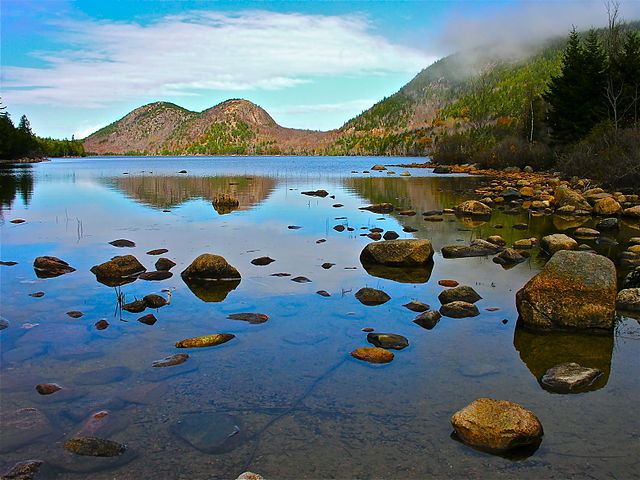
Photo of Acadia National Park via Creative Commons
Lyme disease: Still a Concern to the Hiker, Gardner and Outdoor Lovers
Lyme disease strikes fear in many Americans, and yet, no one dies of Lyme. It may be so scary because it can strike unexpectedly and because it has the potential to be chronic and debilitating. You can pick up Lyme disease and not know it, and, once you’re ill, it is sometimes hard for doctors to diagnose or treat. The best approach is to avoid Lyme disease in the first place.
As with most things, your best weapons against Lyme disease are knowledge and understanding. Lyme disease is an infection caused by a bacterium called Borrelia burgdorferi. As most people know, you pick up that germ from a tick bite. Most people, however, do not realize how small those ticks are and how unapparent their bites are – more on that later.
After you become infected with B. burgdorferi bacteria, the disease that follows generally takes a predictable path. If you recognize the early symptoms and get treated in an early stage, you will be able to avoid the chronic effects of Lyme disease.
A typical case of Lyme disease starts at the site of the tick bite. There, in less than a month, an expanding red rash develops (erythema chronicum migrans). Even without treatment the rash may go away on its own, but during the rash phase Borrelia bacteria are spreading through the bloodstream and may show up somewhere else.
Without antibiotics, the second stage of Lyme disease may start weeks to months after the rash fades. The most common manifestation of this stage is arthritis, and the most common joints that are affected are the knees. The knees don’t merely get achy, but they tend to get swollen, hot and painful, and persons with this usually end up seeing a rheumatologist.
Unfortunately, the second stage of Lyme disease is not restricted to the joints. It can also show up in the nervous system where if may cause a mild form of meningitis with headache and stiff neck; or Bell’s palsy with droopy, paralyzed facial muscles.
The heart may also be infected in the second stage. It can cause third degree heart block with a very slow heart beat; or mycocarditis with a weakened heart muscle, usually presenting with shortness of breath. The late stages of Lyme disease can involve chronic arthritis and debilitating fatigue, but in almost all of these cases, there were prior acute manifestations in the skin, joints, nervous system and/or heart.
Is Lyme disease preventable? Yes. Lyme disease occurs after the bit of a deer tick. No tick bite, no Lyme. As with most infections, your primary weapon in prevention is knowledge. For Lyme disease, it is understanding the deer tick.
Deer tick bites in May, June or July are the biggest risk for Lyme disease. It is the poppy-seed-sized nymph tick that is most likely to transmit the Lyme bacteria. The nymph is poised on low grass waiting for the common white-footed mouse, their natural source of food. When a human foot brushes a blade of grass instead of a mouse, the nymph still lunges at the opportunity and will feed on you, painlessly, for a few days. Less commonly and usually in the autumn, the adult female deer tick may also transmit Lyme disease. She is the size of an apple seed and usually attaches about knee height.
So, if you live in a risk zone (see map above) and you want to avoid Lyme disease, you need a strategy to avoid tick bites. Your strategy should be three-pronged: (1) deny ticks access to your skin; (2) repel ticks; and (3) remove ticks promptly.
Denying ticks access: Wear long pants; loose fitting is best. There should be no break between pants and socks — you can tuck the pants into the socks or into your boots, or put a rubber band or masking tape over your lower pants leg. If you lie down, be sure your neck and head are covered.
Repellants: Use a repellant with DEET because it is most effective. On clothes (and dogs) you can also use a repellant with permethrin (or pyrethrin). If properly applied, permethrin may remain active on your clothes for a week.
Check for ticks when you get home: Check yourself, check your kids and check each other. It takes time for Lyme to be transmitted. (In sheep, 24 hours of attachment was required.)
Lyme disease is certainly a risk if you want to lead an active life in the outdoors, but now you know how to manage that risk. Let nature fuel your soul and be prepared to protect your health and wellness.

Dr. Weinberg and his wife, Lynn, hiking in Iceland.
Wink Weinberg has been a practicing Infectious Disease specialist for over 30 years. He is certified by the International Society of Travel Medicine and has written extensively about travelers health, including his information filled book “No Germs Allowed“. In his spare time he enjoys traveling, woodworking, raising bonsai, hiking and grand-parenting.


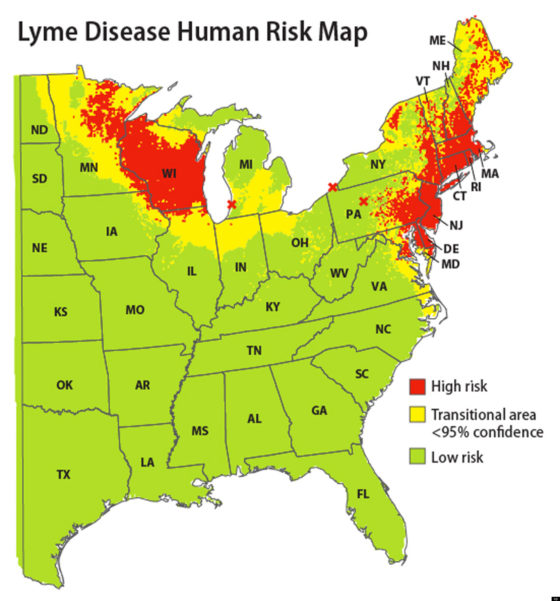
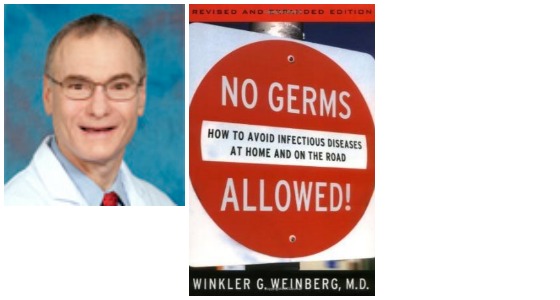























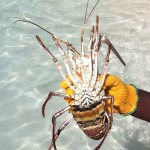






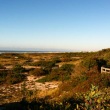



It’s good to read the facts about Lyme disease and its prevention presented so clearly. I hadn’t realized how high the percentage of disease was in some places.
I was surprised to read the stat about Nantucket Donna, especially since I spend so much time there. I’ve been a bit lazy about tick checks on myself and will change that in the future!
Good to know. We were in those high-risk areas during the summer of 2011 and 2012. It looks like, fortunately, we did not get it!
We were in those high-risk areas in the summers of 2011 and 12. It looks like , fortunately, we didn’t get it! Thanks for the info.
Glad you came out with a clean bill of health Carol.
This is a very useful piece about avoiding or at least knowing if you’ve gotten Lyme Disease. I had a friend who went undiagnosed for months and was in misery. She eventually recovered but it could have been prevented. I live in Florida which is low risk but visit New England often so will keep this info in mind. Thanks.
I don’t see Northern California on that map but it should be! There is a big problem out here as well. My daughter “caught” a tick when she was little, walking around on the beautiful Pt. Reyes Peninsula out here. Though we worried, it appears that she didn’t catch anything else. Good article.
Thanks for these very helpful reminders. We live in one of the northeast epicenters of Lyme disease, which also presents a risks to dogs in our neighborhood.
What a thorough explanation, thank you. I live in So Cal and this is not a problem, however when I visit the NE I will have a lot better understanding.